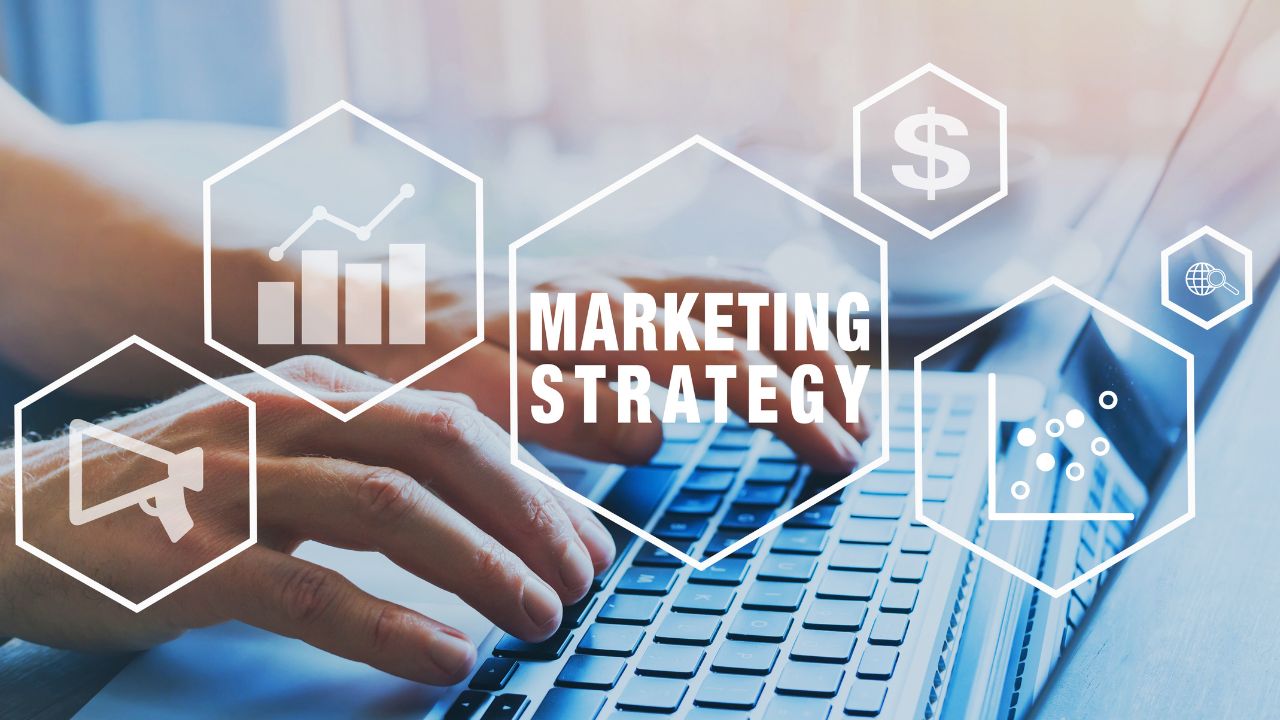You are probably familiar with the idea of performance marketing. This strategy has solidified its position in digital marketing over the years. The investment in the field shows continuous growth, with roughly 80% of digital marketers relying on performance marketing solutions.
Performance marketing can be exactly what you need if you look for data-driven approaches to reach new audiences in a competitive environment. It is reasonable to start your digital marketing journey by getting into the nitty-gritty of performance marketing, how your business can benefit from it, and whether it is a viable option for your enterprise. Let’s get started.
Table of Contents
The Idea Behind Performance Marketing
More often than not, performance marketing strategies apply real-time analytics to boost marketing efforts and deliver optimized results. This marketing strategy enables advertisers to use models like cost-per-mille (CPM), pay-per-click (PPC), downloads, subscriptions, etc.
The key difference between performance marketing and traditional digital marketing models is that advertisers don’t get any payments upfront. This means you don’t have to spend resources on interactions that don’t result in conversion.
In a nutshell, a performance digital marketing strategy uses specific performance metrics to monitor results. Such precise analytics are possible thanks to marketing automation tools, such as call monitoring and call-tracking software, affiliate link tracking, and lead distribution software.
It simplifies the ROI monitoring of each asset, accurate attribution, and tracking of specific user activities to eliminate friction and fine-tune campaigns. For instance, Phonexa offers a performance marketing solution that enables tracking the performance of multiple channels and campaigns while eliminating ad fraud and improving overall lead quality.
What companies benefit from performance marketing most? Unlike large-scale organizations that can allocate funds to brand promotion, SMBs often choose this digital marketing strategy as the optimal one. In such a way, they can distribute the limited financial resources between result-oriented initiatives.
What Are the Pros and Cons of Performance Marketing?
As we already mentioned, performance marketing is the right choice for companies looking to take control of their advertising funds and stay in the loop with comparison reports, real-time updates on campaign performance, and granular traffic flow.
Instead of making an upfront investment and expecting desired results, you pay only for marketing strategies that prove to be effective. To make an informed decision about adopting this digital marketing strategy, you should weigh all the pros and cons.
| Pros | |
| Increased pool of customers | Affiliate marketing programs, PPC advertising experts, pay-per-call networks, influencers, and SMM marketers favor performance marketing. Performance marketing solutions allow them to reach more potential clients and build solid business-customer relations. |
| Real-time tracking options | Marketers can apply performance marketing metrics to measure the progress of marketing campaigns that produce high conversion rates. As a result, businesses can identify the channels generating higher ROI and allocate the funds accordingly. |
| Reduced risks | The pay-for-results model allows networks, brands, and affiliate marketing programs to lower risks as they only invest in campaigns that deliver desired results. |
| Flexibility | You can customize performance marketing strategies and halt those that fail to provide high ROI. |
| Cons | |
| Fraud risks | It’s critical to gauge the effectiveness of fraud prevention measures and implement the right solutions to effectively combat ad fraud and eliminate wasteful spending. |
| Increasing competition | Unfortunately, not all marketing agencies and brands can put obtained data to work without specific digital marketing solutions. To stand out from competitors, it’s essential to build an exceptional martech stack. |
Performance Marketing Results
It’s essential to define the terminology used in the performance marketing domain. As we stated, it is a data-driven strategy that relies on key performance indicators. Here are the most common KPIs:
| Cost per impression (CPM) | When a customer views an ad, it counts as an impression through a displayed ad. It means businesses have to reimburse thousands of impressions. |
| Cost per click (CPC) | The number of times a user clicks on an ad defines how much advertisers have to pay. |
| Cost per lead (CPL) | Subscribing to a newsletter or taking other actions brings businesses qualified leads, so advertisers pay for this type of interaction. |
| Cost per sale (CPS) | CPS is a part of affiliate marketing programs and relies on successful sales. |
| Cost per acquisition/action (CPA) | CPA is the cost of bringing customers to the point of purchase. |
Performance Marketing Channels Review
Performance marketing trends include an omnichannel approach to reaching out to potential customers. Here are some of the most effective tools:
1. Banner Advertisements
Online banner ads have a well-established reputation as an efficient channel for connecting with potential customers. Despite the development of various ad-clockers, banners still manage to appeal to their target audience. In fact, ad blockers contributed to their popularity.
Users who are not against seeing ads disable ad-blocking extensions so banner ads can reach customers who don’t resent the product. Over the years, such ads remain a powerful lead generation strategy.
2. Native Advertising
Native advertising takes various forms, such as boosted social media posts, sponsored posts, and paid YouTube video content. Such a lead generation tool is less intrusive, though some may perceive it as misleading. Indeed, some users treat such ads as genuine site’s content.
Native advertising demonstrates impressive performance results. Thus, video advertising is predicted to grow by more than 20% each year. Social media giants such as YouTube, TikTok, Instagram Reels, and Facebook Watch benefit greatly from such ads. Consider using some of them for product promotion to boost ROI.
3. Content Marketing
Content marketing focuses on using content distribution to advertise the product. This content includes blog posts, infographics, user reviews, case studies, and more. This lead generation strategy educates the audience, improves customer loyalty, and increases demand. You can also effectively combine it with lead generation tools, like PPC and SMM.
4. Social Media Marketing
Social media marketing strategy relies on the power of social networking sites to interact with the audience. It helps generate qualified leads and improve customer retention. One of the fundamental benefits of social media marketing is combining multiple platforms to reach various demographics.
5. Search Engine Marketing
Search engine marketing builds organic traffic by attracting visitors to a web page using search optimization techniques. The process is not quick, and you should skillfully integrate SEO content marketing strategies. That’s why many businesses choose to use paid PPC and Google Ads.
6. Affiliate Marketing
Affiliate marketing programs engage third-party publishers or affiliates to generate sales. The publisher receives a fixed compensation. Their primary task is to promote products via sharing a unique link. Late affiliate link tracking software will identify an affiliate ID to provide compensation.
Build a Successful Performance Marketing Strategy With Ease
Now that we have identified how performance marketing works and its key benefits, we will walk you through developing a successful performance marketing strategy.
Step 1. Set Your Goals
Defining clear objectives is the first step in building an effective digital marketing strategy. Regardless of the ultimate goal, ensure you stick to the SMART approach. If you aim to increase sales, customize your marketing strategy to drive conversions and improve ROI.
Step 2. Segment Your Audience
Separate and analyze your audience based on demographics and other characteristics, including interests and behavior. It can help you to select a relevant contact channel and tailor your messages accordingly.
Remember, personalization is the key to conversion. Launch customer surveys to understand customers’ needs and preferences better. Another way to reach and segment the audience is to use call-tracking software solutions.
Step 3. Select Marketing Channels
Your marketing channel should suit your audience preferences and business needs well. Thus, invest in social media marketing to contact active social network users. Investing in SEO digital marketing is better if you mainly contact your audience through Google search. Selecting channels to sync with your target audience and business objectives is vital.
The next step is to monitor KPIs to maximize performance marketing efficiency.
Step 4. Assign Leads to Sales Reps
To ensure maximum conversion rates, direct leads to correspondent offers and assign them to sales reps to close the deal. Lead distribution software can assist with this process. It processes the information captured by call tracking systems and helps improve business results through successful conversion.
How To Measure Performance Marketing Effectiveness
To estimate the effectiveness of a given performance marketing strategy, you can utilize the following metrics: conversion rates, CPA, ROAS, and customer lifetime value. Regular KPIs analysis helps drive business results.
- Estimate the percentage of web page visitors who make a purchase. In such a way, you can measure the effectiveness of your marketing campaigns.
- Monitor CPA to determine an average price of attracting a new client.
- Calculate how much you earn with each dollar you spend on digital advertising. It allows you to decide whether you should keep investing in digital marketing solutions.
- Customer lifetime value measures how much revenue each customer brings over their lifetime. It helps you improve customer retention and maximize the customer base.
- Marketing ROI is an effective tool for measuring financial returns from digital lead generation in the form of revenue compared to expenses.
Should You Base Your Business Strategy on Performance Marketing?
Implementing performance marketing as a part of your digital marketing strategies brings advantages that are impossible to substitute with any other lead generation tools. It allows you to improve customer retention, boost revenue, and ensure stable business growth. Develop a digital marketing strategy carefully and monitor marketing campaign KPIs diligently, and you are most definitely to bring your business to the next level.



















